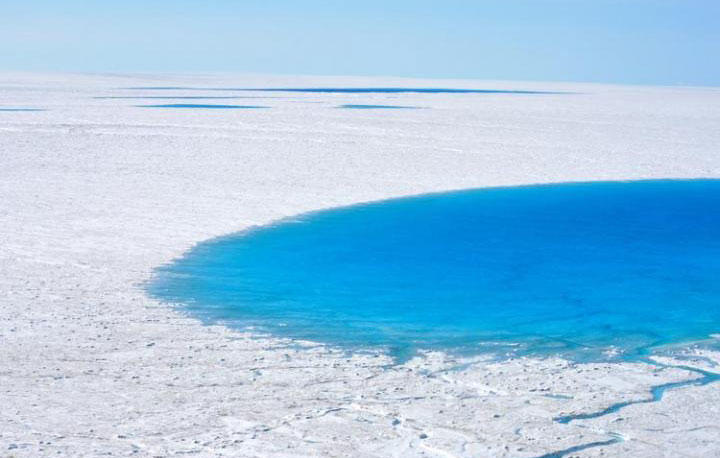
When 11 billion gallons of water drained out of a glacial lake
perched atop the Greenland Ice Sheet in less than two hours, scientists
were left scratching their heads.
The scientific community believed that the weight of such a massive
lake was too much for the glacier to handle, and that the ice buckled
under the pressure, leaving the lake's contents to drain through giant
cracks. They weren't sure, however, why only a random smattering of
lakes drained so quickly, while others of equal size drained slowly.After several years of investigation, researchers from the Woods Hole Oceanographic Institution (WHOI) and the University of Washington have finally determined what exactly causes the selective cracks: movement of massive ice sheets.
Over three consecutive summers, the team used GPS technology to track the movement of the large sheets of ice before, during and after similar large-scale lake drainage events. In the hours leading up to the drainages, ice sheets shifted upward and slipped horizontally. The movement resulted in small vertical shafts in the ice, through which the lakes began to slowly drain, resulting in a pocket of water below the ice sheet.
Subject to pressure from both the actual lake above and the accumulated water below, the ice sheet suddenly cracks, figuratively opening the floodgates through which the lake drains at a remarkable speed.
"Ordinarily, pressure at the ice sheet surface is directed into the lake basin, compressing the ice together. But, essentially, if you push up on the ice sheet and create a dome instead of a bowl, you get tension that stretches the ice surface apart. You change the stress state of the surface ice from compressional to tensional, which promotes crack formation," remarked Laura Stevens, an MIT graduate student who authored a new study on the glacial lakes.

No comments:
Post a Comment